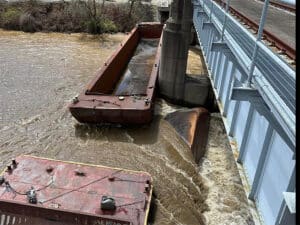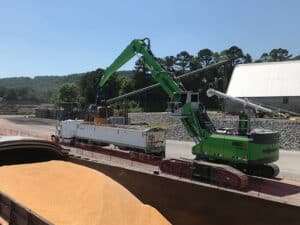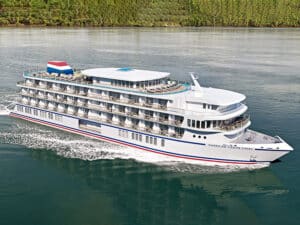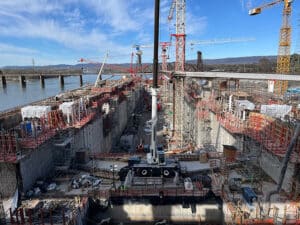
Great Lakes shipyards are bustling
Written by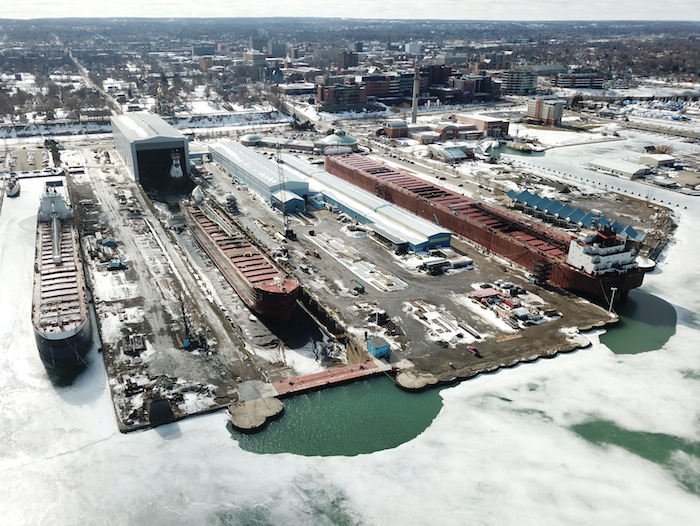
By Jonathan Barnes, Marine Log Contributor
Around the Great Lakes region, shipyards are busy. The need for vessels, maintenance and retrofits, and necessary infrastructure improvements, have led to a hike in activity for some shipbuilders.
But disparities in activity between shipbuilders in the region are not the difference between very little business in the sector and lots of it. Some shipyards in the region stayed busy with work throughout the pandemic and its sometimes cumbersome restrictions, others less so. Now, industry pros say, things are picking up.
Rick Hammer, general manager for Erie, Pa.-based Donjon Shipbuilding & Repair, said he’s seen a noticeable increase in business recently.
“We have noticed an uptick,” Hammer said. “I don’t know if I’d link it to the lifting of the pandemic restrictions, but this year we have certainly got more RFQs.”
Still, is it possible that the pandemic and the needs it created has in some ways helped to lift all boats, so to speak, in shipbuilding?
Maybe, in part. Supply chain logistics, capabilities, and ownership are more relevant than ever, because of the pandemic-wrought travel restrictions that made shipping even more important. Now, there’s a new urgency to successfully deliver goods—almost like a wartime situation. That mindset doesn’t seem likely to change anytime soon; governments and the public have been mobilized against the perceived threat of COVID and expectations for delivering goods are changing. It’s possible that it means steady business, long-term, for shipbuilding.
Pandemic Progress
Don Jon Shipbuilding & Repair’s employees expected a rather brackish business pace when the COVID pandemic hit, but were surprised by how well things worked out.
“We were anticipating a rather slow year, but we had a very successful year,” Hammer said. “Most of the work done during the start of the pandemic was based on plans and budgets from the previous year. I think the fact that commerce must continue and is needed to keep America running factored into the activity.”
The trains, trucks and ships still have to deliver on time during war or pandemic, no doubt. Still, it’s not as if shipyards were immune to suffering some ill effects of the pandemic. The lockdowns did create problems resulting in delays in materials and labor, but it didn’t truly impede business, according to Hammer.
“Throughout the whole process we were able to remain open and operating, because as part of the marine transport industry, the shipyard was deemed to be critical infrastructure with essential workers,” he said.
The unprecedented restrictions of the pandemic were especially damaging to industries that depend upon foot traffic, and many didn’t survive. Things are very different from that scenario in shipbuilding. It could be too soon to tell, but the overall effect of the pandemic on shipbuilding might be to have buoyed the sector, adding new projects and new relevance. Certainly, shipping is more prominent these days.
Fincantieri Bay Shipbuilding kept on task during the pandemic. The company was able to keep its entire workforce employed during the past 18 months, said Todd Thayse, vice-president and general manager for Fincantieri Bay Shipbuilding.
“In addition to our continued and uninterrupted support of the Great Lakes fleet, we delivered two new construction vessels in 2020, [and] are on schedule to deliver a 5,400-cubic-meter LNG bunker barge in 2021,” Thayse said. “In 2022, Fincantieri Bay Shipbuilding will be delivering the Mark Barker, the first U.S.-flagged self-unloading vessel for Great Lakes service built since the 1980s.”
The new ship being built specifically for the Great Lakes is part of a company legacy of shipbuilding in the region. Fincantieri Bay Shipbuilding has been upgrading and building ships for the Great Lakes for generations.
“The Michigan Trader, as well as the Mark Barker, represent a significant lineage of our company. We built many of the Great Lakes bulk carriers in the 1970s and ‘80s, and have been maintaining these vessels since. We delivered the car ferry Madonna to Washington Island Ferry Line last summer, which is the largest ferry in their fleet,” Thayse said.
With Fincantieri Marine Group member Marinette Marine Corporation recently awarded a $38 million contract for design and construction of a Constellation-class frigate, the shipbuilder is improving its infrastructure to meet the challenge of the project. Fincantieri currently is investing $300 million in its Wisconsin shipyards.
“Fincantieri Bay Shipbuilding is expanding by adding new buildings for steel storage, to house our new blast and prime line operations, for additional plate and structural shape processing, as well as a new module construct building,” Thayse said. “All of these new facilities will be operational in 2021.”
U.S.-flagged Great Lakes fleet operators helped push some of the activity in the past year, investing $87 million over the 2020-2021 winter season in their vessels in shipyards and facilities across the region. In the past year, Fincantieri Bay shipbuilding also has seen some other growing lines of business.
“We have seen a significant increase in opportunities this year, across multiple market segments including LNG Bunkering, wind farm support vessels, dredges, ferries and various government programs,” Thayse said.
Offshore Wind
Projected growth in offshore wind development has figured into some shipbuilders’ business, but not all. The growth in offshore wind projects is not fueling a lot of activity in the region’s shipyards, some say.
“Offshore wind has been discussed on the lakes for many years,” Hammer adds. “It seems to ebb and flow with the politics at the time. We personally have yet to see it come to fruition.”
Fincantieri Bay Shipbuilding, being a larger group, may be in a better spot to snag some of the shipbuilding work in offshore wind. Part of the current demand for vessels in the nascent U.S. offshore wind industry is for barges used in feedering systems, and for purpose-built ships such as crew transfer vessels.
The large company finds the growing new market to be a promising one.
“We have worked on several projects that will become purpose-built ships and barges to support the offshore wind market,” Thayse said. “We have been working in this market for several years now, supporting our customers in the development of vessels to work in this new market, and we are expecting this market to remain viable for the near future.”
Government Funding
Other government-backed business could bode well for the sector, too. President Biden has proposed spending $17 billion on inland waterways, coastal ports, ferries, and land ports of entry. But so far, Great Lakes shipyards aren’t seeing much of a boost from the announcement.
“We have yet to see opportunities as a direct result of the infrastructure bill,” Thayse said. “However, we have already seen an increase in opportunities for ferry vessels. We are expecting to see continued opportunities in these market areas as these projects are funded.”
The U.S. Department of Transportation’s Maritime Administration has released a report, which states that collectively, U.S. private shipyards amount to $42 billion in gross domestic product. It’s a fact that gives a better sense of the sector’s wide economic impact.
“We were unaware of the magnitude of the impact, but have been well aware of the importance of the U.S. shipbuilding industry both to our local communities and the overall economy,” Thayse said. “We see firsthand the impact shipbuilding brings to our local community as we are the largest local employer in a town that has been building and maintaining ships for over 100 years.”


